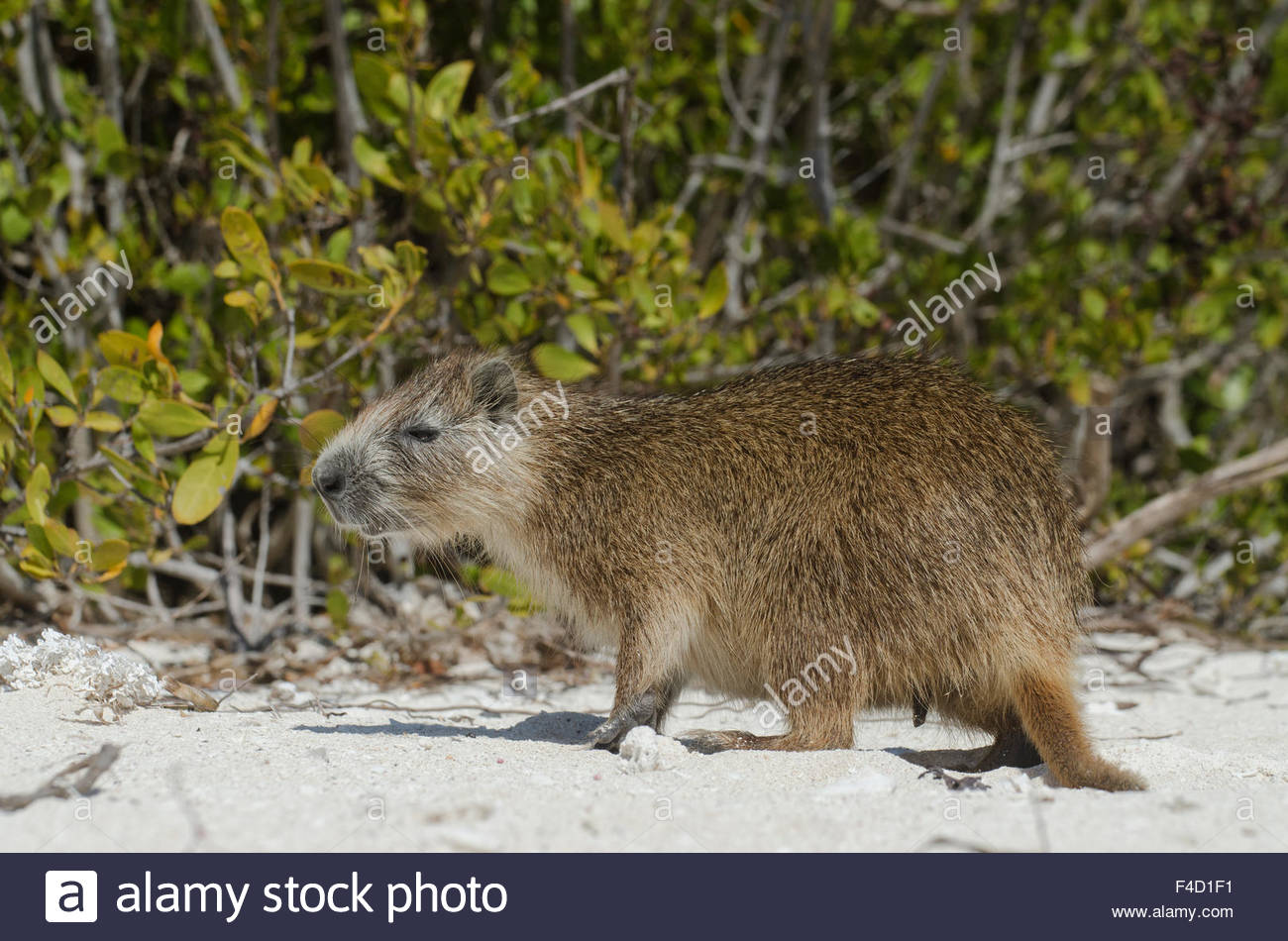HAVANA — The islands of the Caribbean used to be home to a huge array of unusual animals, including a group of rodents that weighed up to 440 pounds.
Where these super-sized rodents came from and how they evolved into such hefty animals has finally been discovered, showing how they crossed the sea from South America to land on the beaches of the Caribbean.
The history of the region and the species which live on the myriad of islands dotting this part of the Caribbean Sea is complex. How and when certain groups of animals and plants arrived in the region is still not fully understood.
This has included a group of rodents, technically known as the caviomorphs, which contains species such as the capybara, guinea pigs and chinchillas.
At some point in the past, the caviomorphs made their way to the islands of the Caribbean, where they then diverged into at least 33 species, of which the majority are now extinct. But how exactly these species were related to their relatives on the mainland was unclear.
By delving into the ancient DNA from fossils of the extinct rodents, a new study has managed to unravel the history of these seafaring creatures.
Selina Brace, a researcher at the Museum, was involved with piecing together the rodents’ history and voyage, along with colleagues including Prof. Ian Barnes, Rosie Woods who conducted the study as part of her PhD and Prof. Samuel Turvey from the Institute of Zoology.
“The big thing that we found out is that all the Caribbean species form one single clade,” Brace said. “That means that they all have one single, common ancestor.”
This shows that from a single arrival roughly 18 million years ago, this group of rodents evolved into a huge number of species inhabiting lots of different environments. But that is not all.
“They also evolved into a number of different sizes, with some of them becoming up to 30 times larger than their relatives,” Brace said. “This is the largest increase in size in any known living or extinct rodent.”
The paper can be read in full in the journal Molecular Biology and Evolution.

The Caribbean complex
The geography of the Caribbean is complex as five different tectonic plates all meet in the same region. This makes it very difficult to work out where and when different species arrived on the islands as the land was in such dramatic flux.
One way to figure out how animals hopped across the islands is to look at their DNA and use that to determine their relationships. As most of the species are now extinct, Selina and her colleagues used ancient DNA from the fossils of these rodents to help build this picture.
But the hot and humid environmental conditions found across the Caribbean further complicated things.
“It is hard working with Caribbean material, mainly because it is so hot,” explains Selina. “Heat is not a friend of DNA, and the hotter the environment the faster the DNA breaks down and so what you are left with are these very short fragments which make it difficult to work with.”
By refining their techniques, the team were able to extract enough DNA from these fossils to compare it with the remaining species that survive in the Caribbean and so build up a detailed family tree.
From this, they could clearly see a moment when either a few rodents, or a pregnant individual, rafted over open water to live on one island in the archipelago. From there, the animals continued to island hop and change.
“It is unusual to have just a single colonization event,” Brace said. “We have done work on other Caribbean mammals, such as the region’s extinct primates, and they arrived in several colonization events rather than just one.”
What is more, the sheer range of changes in the animals’ body sizes and shapes is incredible. There are species which lived on the ground and those which lived up in trees. But the most dramatic differences are those in size, with the smallest species reaching just 3.5 ounces in weight but the largest tipping the scales at 440 pounds, comparable with American black bears.
The process in which a smaller species arrives on an island and evolves into a much larger animal is known as insular gigantism and can occur, in part, due to a lack of predators.
“What is interesting as well is that they have this insular gigantism,” Brace said. “So we now know which species from the mainland these island forms are related to, and we can see that their closest relatives are actually quite small. It is unusual to have this massive increase in size.”
Unfortunately, these huge sizes may well have contributed to their eventual extinction. Out of a total of 33 species of caviomorphs that once lives across the Caribbean, only 11 now survive.
This most probably occurred after people colonized the islands around 5,500 years ago, bringing with them invasive predators and hungry appetites.

Protecting the last survivors
From this past range in diversity, there are now only a handful of native rodent species left scattered across the islands of the Caribbean. Even today, however, their future remains uncertain.
“There are 11 species that survive in the Caribbean, and the vast majority of those are highly threatened and verging on extinction,” Brace said.
This is down to a combination of factors, including habitat destruction and the invasive black rats and mongooses that are common across many of the islands.
“Now that we’ve shown what an interesting group these rodents are, it really illustrates that we should be putting in more efforts to try and conserve and protect these last surviving remnants of this absolutely fascinating family,” Brace said. “Their evolutionary history is really quite unusual so we should be working towards protecting the few surviving species.”
—Natural History Museum

